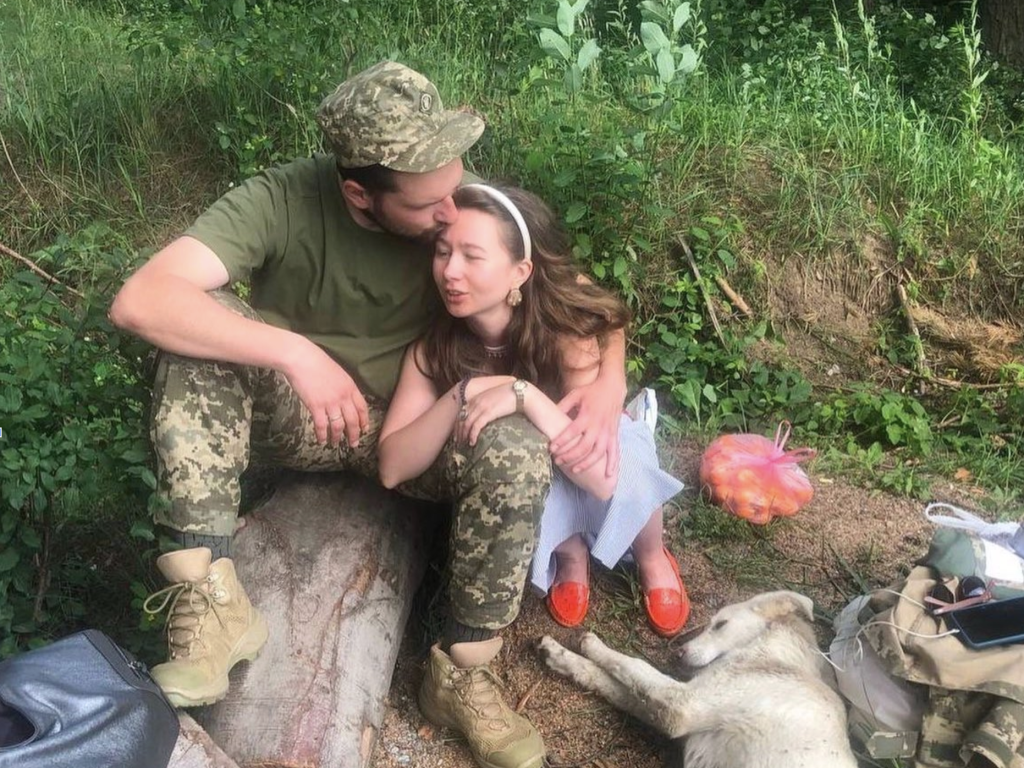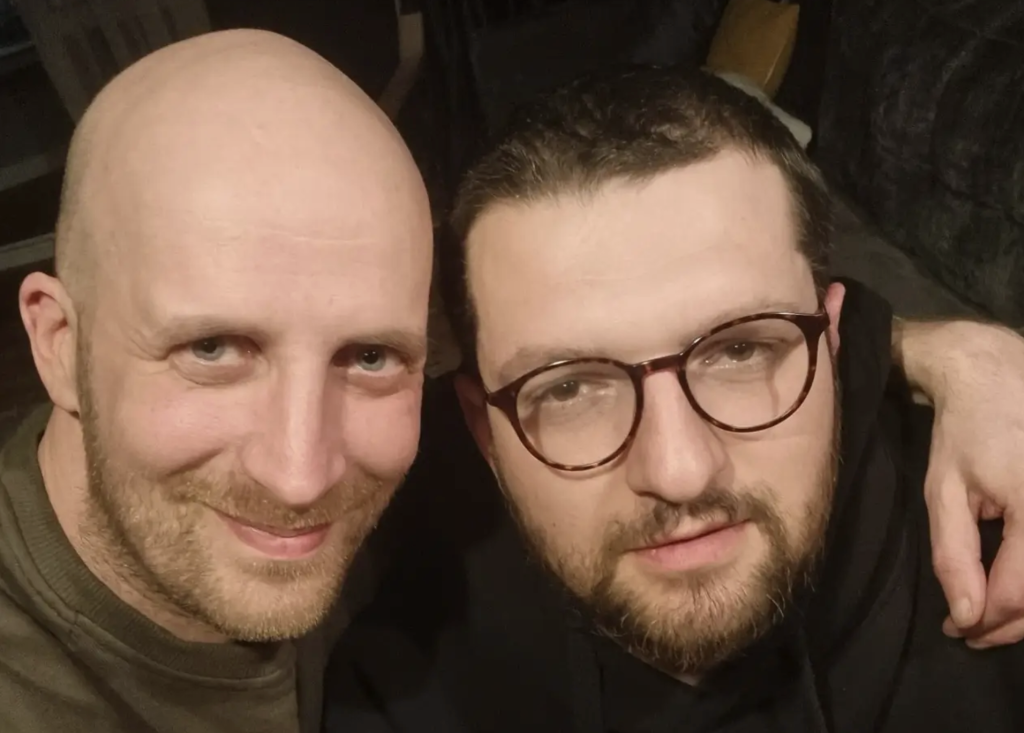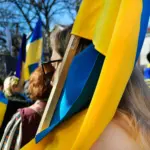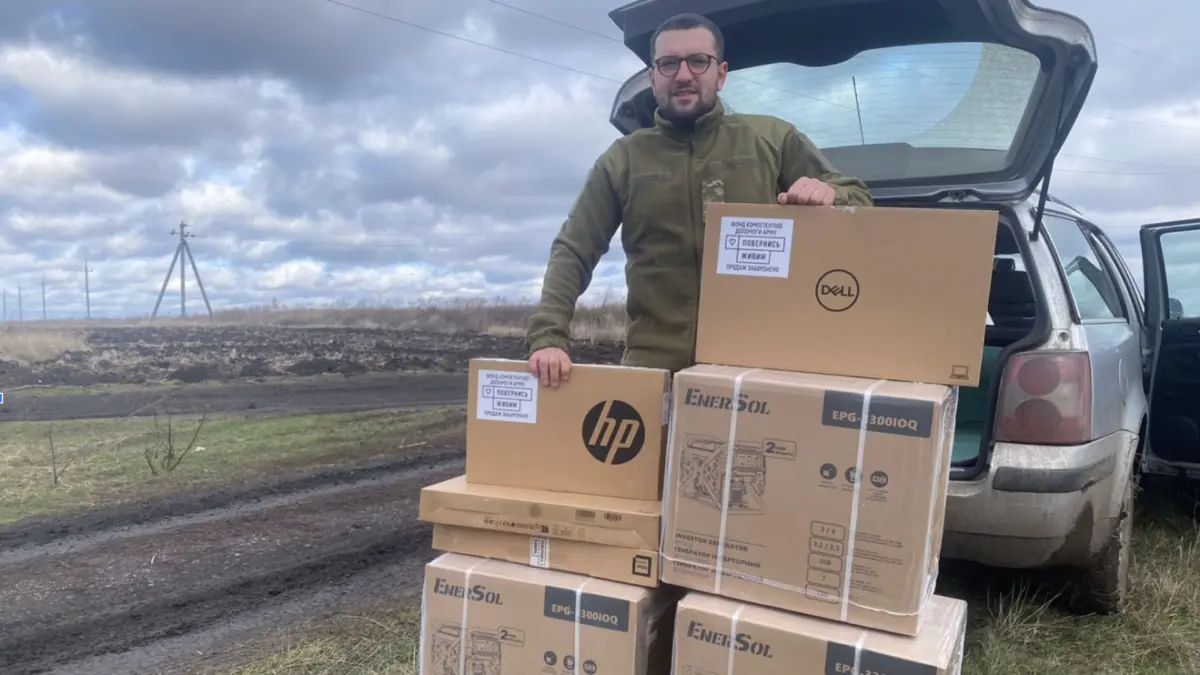In a March 2022 Reuters article, Andrii Senkiv was described as a pacifist who “blogged about sport and had never held a gun in his life” before Russia launched its assault on Ukraine.
“It’s very scary that, in the 21st century, skills that should have died out a long time ago are again in high demand,” he said at that time. When asked if he would kill Russians, he replied: “I won’t be ready, but I’ll do it.”
By 2024, Andrii was forced to put his career on hold after being called up to the army shortly after purchasing his first home with his wife, Marishka.
“I joined the army in June 2024. I received a draft notice and reported to the Territorial Recruitment Center,” says Senkiv. “I’m a soldier in the 53rd Separate Rifle Battalion and I’m responsible for supporting the unit—coordinating with foundations, donors, city and regional councils, football clubs, and organising fundraising efforts. Put simply, I search for Mavics, other essential equipment, and means of destruction that we need.”

The battalion is currently stationed in the Novopavlivka direction, near Velyka Novosilka. Since he operates between 10 to 40 kilometres from the front line, depending on the situation, Senkiv does not take part in direct combat. That distance gives him enough stability to still follow his passion—football. “Of course, not as much or as regularly as before, but I still manage to catch a few matches a week.”
Ukrainian football clubs have stepped up to support his unit, donating supplies and equipment. “Obolon, Shakhtar, Dynamo, Polissya, Rukh, LNZ, Karpaty, Epitsentr, and Metalist 1925 have all contributed,” he says. He also expresses gratitude to colleagues like Dmytro Povoroznyuk and Vlada Zinchenko, as well as club officials who’ve helped establish contact and organise fundraisers.
These days, what brings Senkiv the most excitement is when his unit receives supplies that soldiers urgently need. “I’m the guy who takes pics with boxes and gets excited when those boxes contain stuff needed for my battalion,” wrote Senkiv on social media.
British-Ukrainian football journalist Andrew Todos, founder of Zorya Londonsk, recalls his early connection with Senkiv. “Andriy and I are friends, we’ve known each other for over five years. He interviewed me in the early days of Zorya Londonsk for an article when he was working at Tribuna.”
“He’s well known in Ukrainian football circles, as well as in other sports like volleyball and basketball,” Todos continued. “Andriy used to work at Tribuna, one of the biggest sports news sites in Ukraine. He later joined the popular football YouTube channel TaToTake before branching out to host his own show called Good Ibening, where he summarised major football stories on a daily or weekly basis.”

The war brought Good Ibening to a halt, but Senkiv still semi-regularly co-hosts KDK–Klub Dyvanykh Krytykiv (Couch Experts Club), a YouTube channel where he discusses football alongside Serhii Bolotnikov, the former Tribuna editor and founder of TaToTake, who is also now serving on the front.
A lifelong fan of Tottenham Hotspur and Obolon, Senkiv is so devoted he even has the Tottenham logo tattooed on his body. His commitment to his country, like his loyalty to his favourite clubs, runs deep. “Before being drafted, Andriy had said that if the time came, he would accept it and willingly join the army,” Todos said. “So while it was, of course, a bit of a shock when it finally happened, it came as no surprise that he stepped up without hesitation.”
Despite the war, Senkiv continues to dream of returning to the life he once knew. “I don’t yet know when this will end,” he said. “But I’d like to live a quiet, peaceful, steady life. Ride a bike, play basketball, spend time with my wife and family, and record football podcasts. That would be enough.”
Ukrainian sports journalist Andrii Senkiv who now serves in the Ukrainian army. Photo: Andrii Senkiv.







